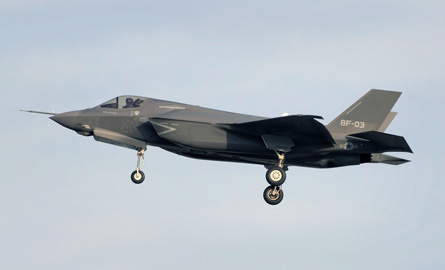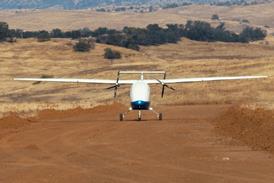The surprise firing of the US government programme manager and the withholding of a $614 million incentive fee overshadowed Lockheed Martin's plans to showcase the F-35 at the Singapore air show, where the host air force has started down the path of acquiring the stealth fighter.
But Lockheed executives strove to emphasise the positives in the wake of Secretary of Defense Robert Gates' revelations as he unveiled the US Department of Defense's fiscal year 2011 budget request on 1 February.
Brig Gen David Heinz, who inherited the programme a year ago, will be replaced by a three-star general or admiral, with the higher-ranking officer signalling a new commitment to resolving the programme's problems.
Moreover, the Pentagon moved $2.8 billion from F-35 production into the research and development account, but the overall budget remained steady at nearly $11 billion in FY2011, says Steve O'Bryan, Lockheed vice-president for business development.
Although the DoD slashed production by five jets, one F-35 was added to the its pending request for emergency war funding. O'Bryan casts that decision as an indication that the Pentagon views the F-35 as relevant for current operations.
Lockheed also announced that the third flight-test aircraft for the short take-off and vertical landing programme - dubbed BF-3 - has achieved first flight. This was more than one year behind the original schedule, but Lockheed portrayed the event as another sign of progress.
 |
|---|
© Lockheed Martin |
STOVL aircraft BF-3 is the latest F-35 to have flown |
Lockheed may also have an opportunity to recover the entire incentive fee that Gates has put on hold. Portions of the fee could be released as Lockheed completes certain tasks. Both sides are negotiating the terms for measuring Lockheed's performance to recover the $614 million currently on hold, O'Bryan says.
For its part, F135 engine supplier Pratt & Whitney also reported progress with improving the powerplant's reliability and affordability. The US Navy had identified four "items of interest" with the BF-1 flight-test aircraft, says Tom Farmer, president of P&W's military engines. P&W has already addressed concerns about a "clutch heat-up" problem, and a turbine blade fatigue issue discovered a year ago, he says.
P&W also has committed to absorb any cost overruns as it builds the next lot of production engines, rather than passing on the extra cost to the government, says William Begert, vice-president of business development.
However, the pressure will only continue to grow on Lockheed's performance as a series of key milestones approaches. Lockheed is due to deliver the first production F-35As to Eglin AFB, Florida, to launch training in the third quarter, even though the AF-1 flight-test aircraft has flown only once so far.
Despite ferrying to NAS Patuxent River in November, the BF-1 flight-test aircraft has completed only two of the 12 flights necessary to achieve the programme's first vertical landing. That milestone had slipped from last June to "early" 2010, but programme officials now describe the event as scheduled for "later this year".
Source: Flight International
















